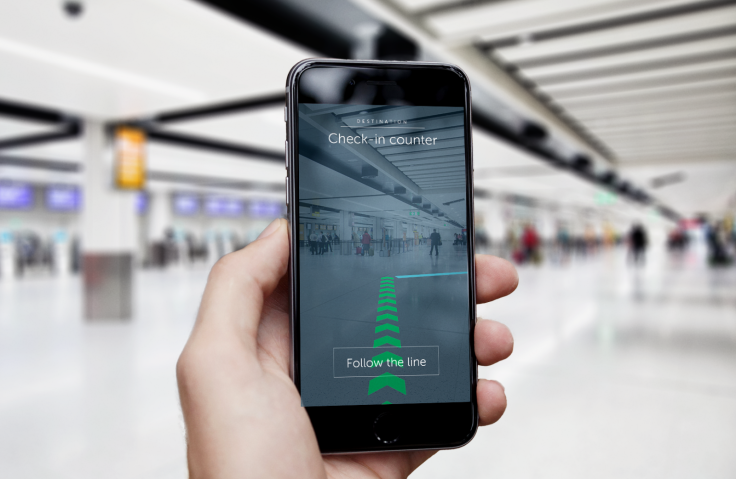Gatwick Airport first in world to use augmented reality navigation to guide lost passengers
Indoor beacons broadcast augmented reality arrows in an app to avoid missed flights.

Gatwick has become the first airport in the world to implement augmented reality technology as an indoor navigation system to guide passengers who might be lost.
The airport has installed around 2,000 battery-powered beacons across two terminals as part of a £2.5bn ($3.24bn) transformation programme aimed at making it easier for passengers to find their way around the airport so they don't miss their flights.
GPS satellite navigation systems are good for providing directions when you're outside, but the signals are unreliable indoors as they struggle to penetrate concrete walls of buildings, which is why Google Maps won't work.
Instead the airport is using beacons mounted on walls and fixtures. When a passenger walks past a beacon with the companion app open on their smartphone, the beacon tells the smartphone that the passenger has just walked past a specific point.
To locate a specific departure gate, the nearest toilet, baggage belts or a specific check-in area, the app uses the smartphone's camera to show the passenger a view of the area in front of them, and then overlays 3D arrows and signs in augmented reality on the screen, so that the person can see exactly where they need to head towards.
Gatwick says it is currently integrating the new navigation technology into its apps, and it is offering the technology as a service that could be included in airline apps to improve indoor positioning tools.
The airport will only be collecting generic information about the numbers of people located in each beacon zone, but will not collect any personal details about any identifiable individual.
There is a possibility however for airlines to use the navigation technology to offer passengers a customised experience. If the passenger consents, the airline's app could essentially track the passenger's progress through the airport to locate passengers that are running late, in order to send out reminders.
The technology would also help the airline decide whether to wait for the passenger, or whether to offload their luggage so it can be taken off the aircraft in time before it departs.
© Copyright IBTimes 2025. All rights reserved.






















